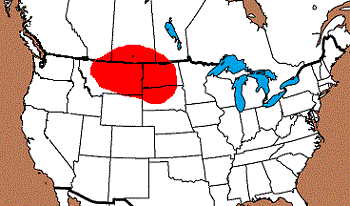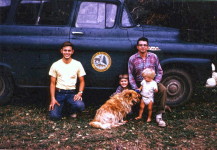Outline is Representative of Size and Shape:

Name Details:
Identified By: Thomas Kehoe
Named For: Type Site
Date Identified: 1966
Type Site: Emigrant Site, Montana
Identified By: Thomas Kehoe
Named For: Type Site
Date Identified: 1966
Type Site: Emigrant Site, Montana
Point Validity:
Valid type
Kehoe is a professional anthropologist who worked extensively on archeology of Montana and served as both a professor and curator at the Museum of the Plains Indian at Browning Montana. This type was named in a professional publication. There are limited professional references, this may be due to most of these points are typed as Plains Side Notch and not broken down into the variants. This is considered a valid type.
Kehoe is a professional anthropologist who worked extensively on archeology of Montana and served as both a professor and curator at the Museum of the Plains Indian at Browning Montana. This type was named in a professional publication. There are limited professional references, this may be due to most of these points are typed as Plains Side Notch and not broken down into the variants. This is considered a valid type.
Emigrant Side Notch
Sub-type Farson Tri-Notch(Plains Side Notch Variant)
Cluster: Plains Side Notch Cluster
Description of Physical Characteristics and Flaking Pattern:
This is a thin small side notch point with a flattened cross section. The blade is primarily straight, but may vary to slightly excurvate. Parallel U-shaped notches enter the blade forming horizontal shoulders and an expanded stem. The base has a center notch. The basal corners are rounded. This point has a random flaking pattern.
Size Measurements:
Length - 10 to 34 mm (20.6 mm mean), Width - 9 to 18 mm (14.2 mm mean), Thickness - 2 to 7 mm (2.6 mm mean)
Length - 10 to 34 mm (20.6 mm mean), Width - 9 to 18 mm (14.2 mm mean), Thickness - 2 to 7 mm (2.6 mm mean)
Commonly Utilized Material:
Additional Comments:
This is similar to the Desert Sierra that is found in the Great Basin and into the Colorado Plateau. The boundaries of the Desert Sierra extend into Wyoming, but does not extend into Montana.
Plains Side Notch variants as described by Kehoe (as illustrated 1966)
 1. Plains Side Notch (Primary type) 2. Billings, 3. Buffalo Gap, 4. Cut Bank, 5. Emigrant, 6. Paskapoo, 7. Pekisko, 8. Washita
1. Plains Side Notch (Primary type) 2. Billings, 3. Buffalo Gap, 4. Cut Bank, 5. Emigrant, 6. Paskapoo, 7. Pekisko, 8. Washita
This is similar to the Desert Sierra that is found in the Great Basin and into the Colorado Plateau. The boundaries of the Desert Sierra extend into Wyoming, but does not extend into Montana.
Plains Side Notch variants as described by Kehoe (as illustrated 1966)
 1. Plains Side Notch (Primary type) 2. Billings, 3. Buffalo Gap, 4. Cut Bank, 5. Emigrant, 6. Paskapoo, 7. Pekisko, 8. Washita
1. Plains Side Notch (Primary type) 2. Billings, 3. Buffalo Gap, 4. Cut Bank, 5. Emigrant, 6. Paskapoo, 7. Pekisko, 8. Washita Distribution:
Distribution Comments:
This point is primarily found in the northern plains region of Montana, northern South Dakota, North Dakota, and into southern Saskatchewan.
This point is primarily found in the northern plains region of Montana, northern South Dakota, North Dakota, and into southern Saskatchewan.
Age / Periods:
Date: 300 - 200 B.P.
Cultural Period: Historic
Glacial Period: Little Ice Age
Culture:
Date: 300 - 200 B.P.
Cultural Period: Historic
Glacial Period: Little Ice Age
Culture:
Age Details:

 (click
for larger image)
(click
for larger image)





